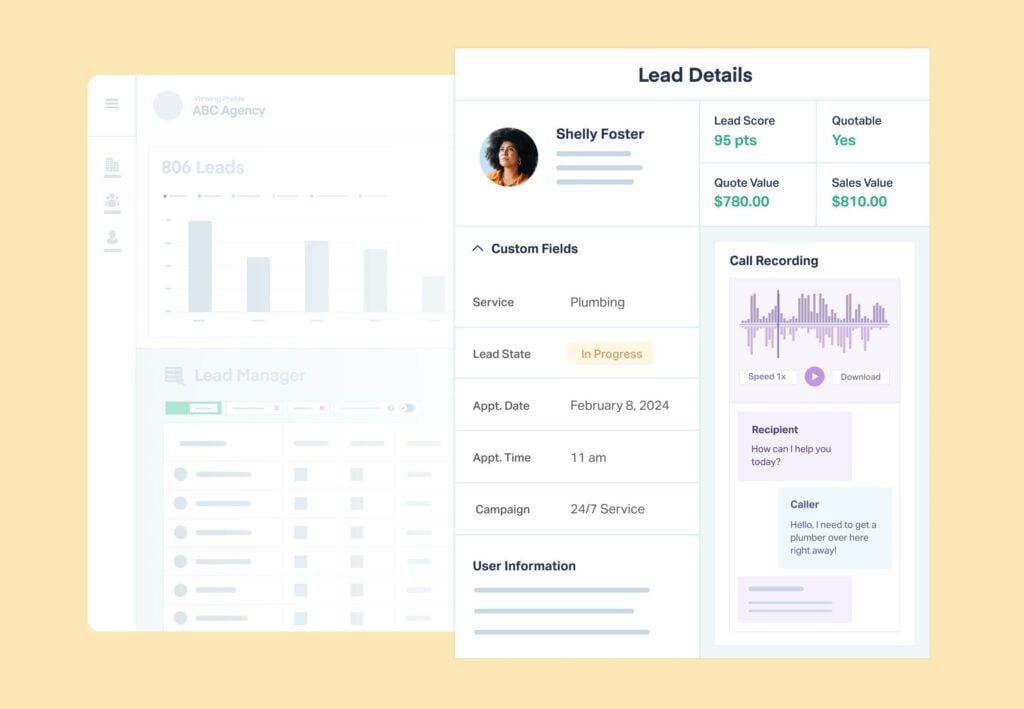
Your client wants "better quality leads."
“Okay, can do,” you say. “Which ones so far have been good and which weren’t?”
Silence.
Not malicious silence. Not evasive silence. Just the silence of a business that's too busy selling to tell you which leads actually turned into revenue.
This is where most lead gen agencies lose control of performance.
Not in the ads. Not in the landing pages. But in the black hole after the lead is delivered—where feedback should exist, but rarely does.
And without that feedback, you're expected to optimize while blindfolded.
This article is about fixing that problem without begging, nagging, or building one more spreadsheet nobody updates.
Why Client Feedback Dies in the Handoff
The feedback breakdown doesn’t happen because clients don't care. It happens because providing useful lead data requires work—work that competes with actually closing deals.
Clients focus on selling, not data entry. When a lead comes in, the rep qualifies it, works it, and moves on. Documenting that lead's quality, source effectiveness, and ultimate outcome? That's extra effort with no immediate payoff for the person doing the work.
The result: feedback becomes sporadic, incomplete, or nonexistent.
This creates a cascade of blind decisions.
Marketers optimize toward lead volume because that's all they can measure.
The campaign generating 50 cheap leads gets more budget than the one generating 10 valuable leads—even when those 10 close at higher rates and drive significantly more revenue.
Ad platforms chase easy conversions instead of profitable ones.
And when clients question ROI, agencies have only conversion counts to show, not real business outcomes.
Extracting Client Feedback (the Hard Way)
Some agencies solve this by building their own feedback loops. They create shared spreadsheets, send weekly follow-up emails, or schedule regular calls to manually collect lead outcomes.
This works for a while, or with very on-the-ball clients. But for the average client, it’s not long before it falls apart.
Life happens. The client contact gets busy. A key salesperson leaves. The spreadsheet gets abandoned. Manual processes require ongoing commitment from people who don't benefit directly from maintaining them.
The more manual the system, the faster it breaks down.
Closing the Loop with Minimal Client Effort
The only sustainable fix is to remove the heavy lifting entirely. If providing feedback demands extra work from the client, it won't happen consistently.
WhatConverts solves this by capturing all of the data needed to understand lead quality on the marketing side and automatically optimize campaigns to target value.
- Complete lead context. Call recordings, transcripts, form responses, chat logs, and full attribution show what each prospect said and which campaigns drove them.

- Manual qualification without client effort. Sales teams listen to calls and read conversations. Marketers review leads and assign quality ratings based on actual context—no chasing clients for feedback.
- Automated scoring with Lead Intelligence. Set rules that automatically flag qualified leads based on call duration, keywords mentioned, or form fields completed. No manual review needed.

- Real-time sync to ad platforms. Only qualified leads sync to Google Ads and Meta as conversions, teaching algorithms what valuable leads look like. Spend shifts automatically toward what works.
The client's team still does what they do best—sell. The difference is their natural workflow now generates the intelligence marketers need to optimize.
Proof: 167% More Qualified Leads Without Client Effort
Klatch, a UK agency serving medical clinics, faced the exact same problem. Clients were skeptical because reported lead numbers never matched internal patient bookings.
Klatch used WhatConverts' Lead Intelligence to automatically qualify leads based on call duration and keywords. Only qualified leads synced to Google Ads—no manual reporting, no spreadsheets, no client effort.
Result: 167% increase in qualified patient leads in three months, and the clinic hit full capacity.
Read More: Compounding Growth Engine Earns +167% Qualified PPC Leads [Case Study]
What Changes When Feedback Becomes Automatic
When lead quality data flows automatically instead of through manual reporting, three things shift:
- Campaign decisions become confident. Instead of guessing which keywords drive valuable leads, marketers see it directly. Budget moves toward proven performers, not just high-volume sources.
- Client conversations focus on revenue. Reports show "Campaign A generated 12 leads worth $47,000 in closed business" instead of "Campaign A generated 12 leads." That clarity transforms client relationships from cost justification to growth partnership.
- Optimization compounds. Every qualified lead teaches the ad platforms more about what valuable prospects look like. Targeting gets sharper. Cost per qualified lead drops. ROI climbs.
The feedback loop that once required constant manual effort now runs continuously in the background.
From Guessing to Knowing
Marketing without feedback is expensive guesswork.
Campaigns generate leads. Some work. Some don't. Nobody knows which is which.
That changes when lead quality data flows automatically:
- Capture every lead with complete conversation context
- Score and qualify leads based on real signals, not manual reporting
- Track which leads convert to revenue
- Sync quality data back to ad platforms
- Watch automation optimize toward profitable leads
Stop asking clients for feedback they don't have time to provide. Start capturing the intelligence that reveals lead quality automatically—and let that data drive every optimization decision.
Ready to close the feedback loop and optimize on revenue instead of volume? Start your free 14-day WhatConverts trial or book a demo to see how automated lead intelligence transforms campaign performance.
Get a FREE presentation of WhatConverts
One of our marketing experts will give you a full presentation of how WhatConverts can help you grow your business.
Schedule a Demo
Grow your business with WhatConverts





